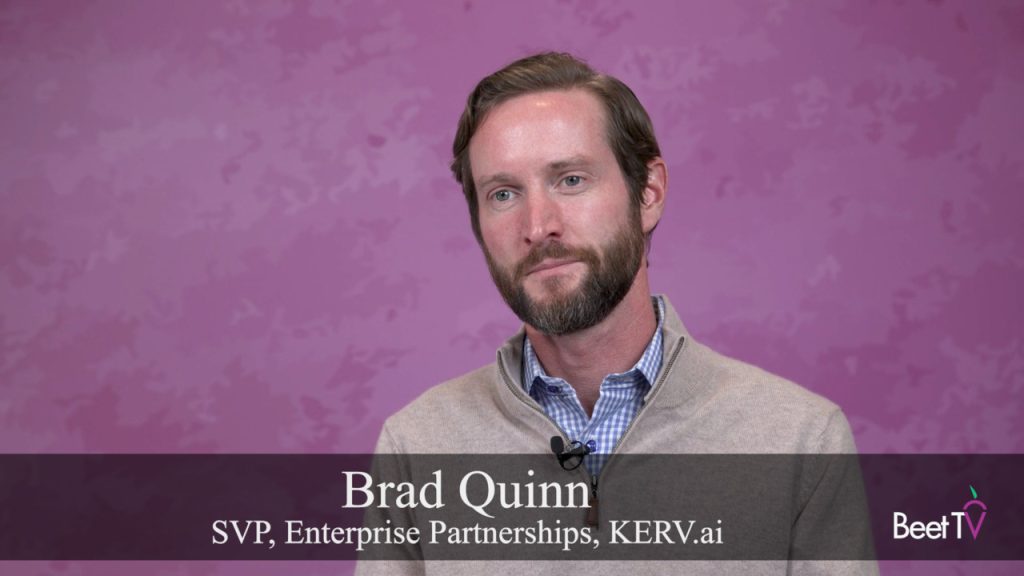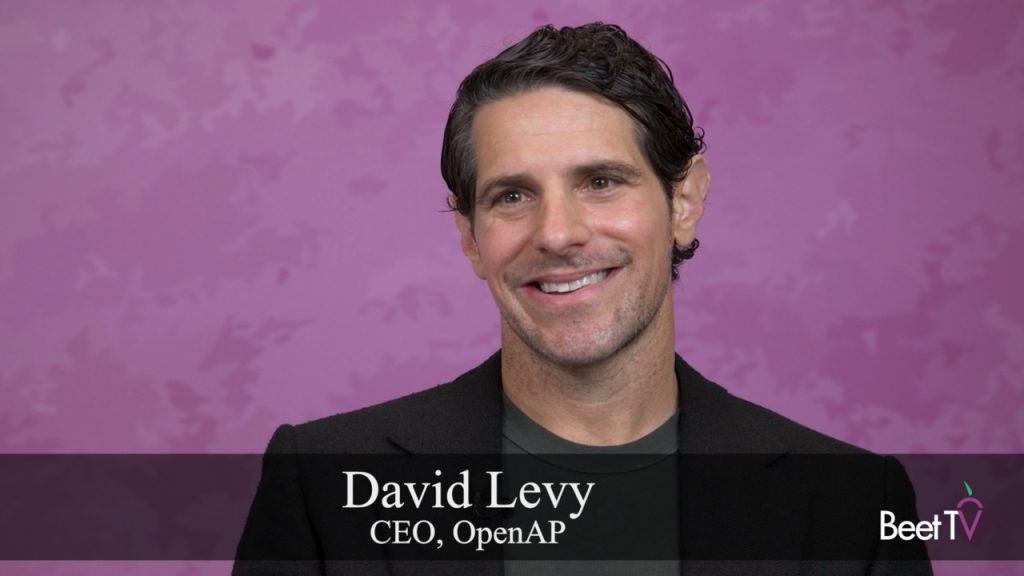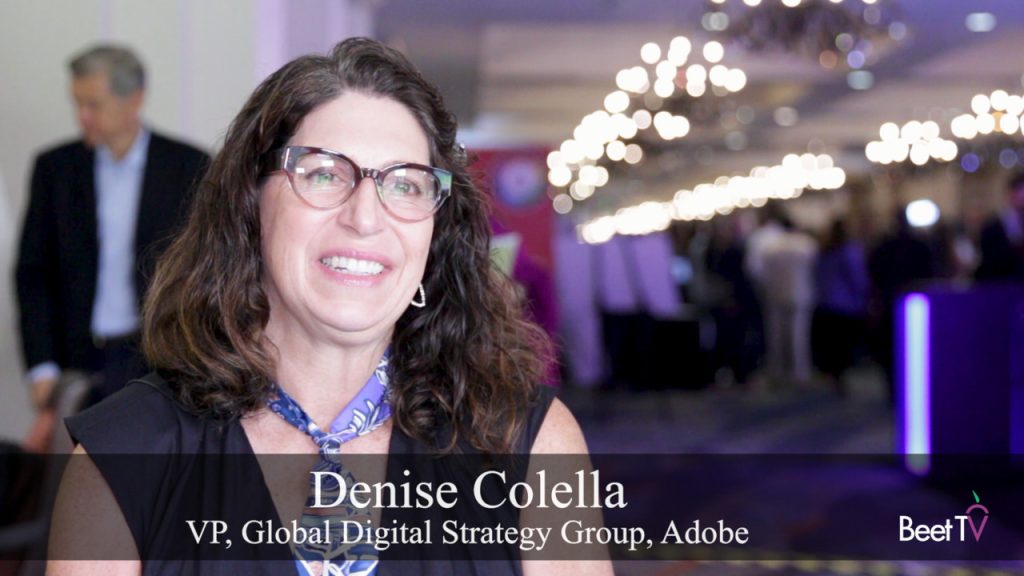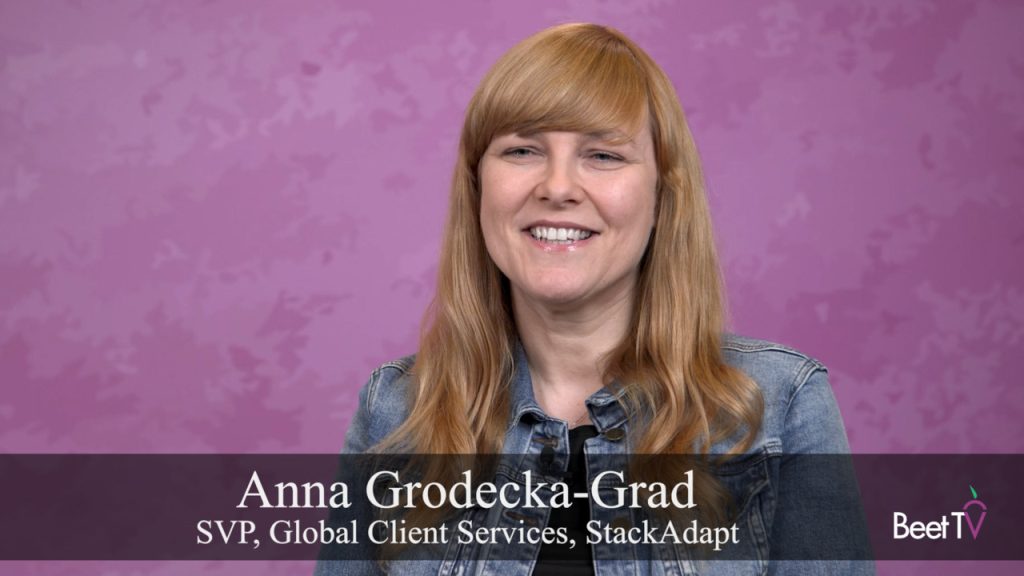
REDMOND, WA — The transcription of the voice track of video has proven to be a big value by making video more searchable. Now, it is making video editing more effective and scalable, explains Charles Tillinghast, President and Publisher of msnbc.com.
A number of technologies are being used by msnbc.com to automatically transcribe and organize raw video and create associated transcripts as part of the production flow.
Charlie says that these emerging, automated systems can create edited videos with "minimum human intervention."
Msnbc.com has been working closely with technology provider Nexidia to enable this process.
We caught up with Charlie last month at the Redmond headquarters of msnbc.com
Andy Plesser, Managing Editor
Video Transcript
Charles Tillinghast: Well the voice to text index is something that we debuted during the presidential debates, where we were able to take the transcripts of the debates, abstract the key words, and then allow people to click on those key words and go straight to the portion of the video. We did it again for the inauguration. That progress on that has continued and so we're now getting to the point where we'll be able to offer that product on almost any video we run. In addition, it provides a big productivity boost for us because we are gradually able to not have to have humans cut each clip, you know, mark the in and mark the out for a particular clip. Instead, we can use this indexing technology to do the automatic cutting and so we can process a vastly greater amount of video without any increase in head count.
Jeff Brooks: So, the key to video now, it's really come down to the metatag and the keying and the keywords, that's really where this, the whole shift seems to have come for everybody making money right now?
Charles Tillinghast: Yeah, that's really the key to being able to process the video and search for it and to put it…to be able to put it where you want it on the site. But the big problem with metadata has been trying to get human beings to type in what those key words are at the point of production. And that's very difficult because often times you have field producers that are not even aware that their video is going to be used on the web, who are expected to put in the right key words to make it searchable. That's a very long chain of custody, if you will, for a piece of video to maintain integrity for metadata. So that's why our automated system is so important because we're not going to be relying on human beings to type those words in. We're going to take the words that are spoken on the video and be able to abstract out what the metadata, the keywords are, make that the metadata, make it searchable and do it all in a very very productive, low cost, low labor content way.
NBC has a vast reservoir of video assets and they are producing fresh video every day more than any other news organization because NBC has msnbc cable, and they have nightly news, Dateline, Meet the Press, The Today Show, and special reports, and local reports, so the quantity of video available to us is unmatched by any of our competitors, but getting all of that into one bucket can be challenging and that's why what we're asking msnbc to do and what they're doing for themselves is that they're getting it all into one place, they're standardizing how all that video is produced and then we're able to grab that video that has made it as far as the television production level and take it an automated way directly into our digital systems and out onto the web. So we're getting very close to the point where there's a minimum amount of human intervention and touching of a video clip once it's shot by the producer.
In the old school, or the old method was we had, what I used to euphemistically call, the world's largest TIVO where we would have satellite dishes on the roof of our building, we'd bring in the content, put it into a gigantic database, and then record it there and then go through manually and pick out the videos that we want to put on the web. Now that we're using the automated metadata we're able to drop it into a database inside of NBC, pull it from there directly into our systems, and then make it searchable for our users directly off our site, and then our editors are focused on basically what are the most important videos or the top videos and placing those prominently on the story pages of our site and our cover, but the rest of it is being handled in an automated way so that we can offer a big array of video choices to our users and with our player, the navigation enhancements on our player, what we're finding is that our player is that demand has has shifted significantly from the most popular videos, the top videos, to the tail, and that we're seeing much more take up on tail viewing of video in a way that we have not seen before.
Jeff Brooks: And by tail you mean the niche stuff?
Charles Tillinghast: The niche stuff. And so it used to be that, in round numbers, that 80% of the videos watched were the top 100 most popular videos, or 80% of the streams were amongst the top 100 videos. Now we're seeing that it's almost shifting so that the majority of the streams viewed, or the videos viewed, the streams that we're aggregating are outside of that top 100. So, interest is being spread across a large set of topics and news stories and it's not as concentrated on just a few stories that we happen to put on the cover. Now the exception, of course, is something like the Michael Jackson story. So you'll have a huge story, but when there's not a huge story we're able to see much more diversity and interest, and that means that we're doing a better job of surfacing this content and making/giving our users the content that is most of interest to them.


























